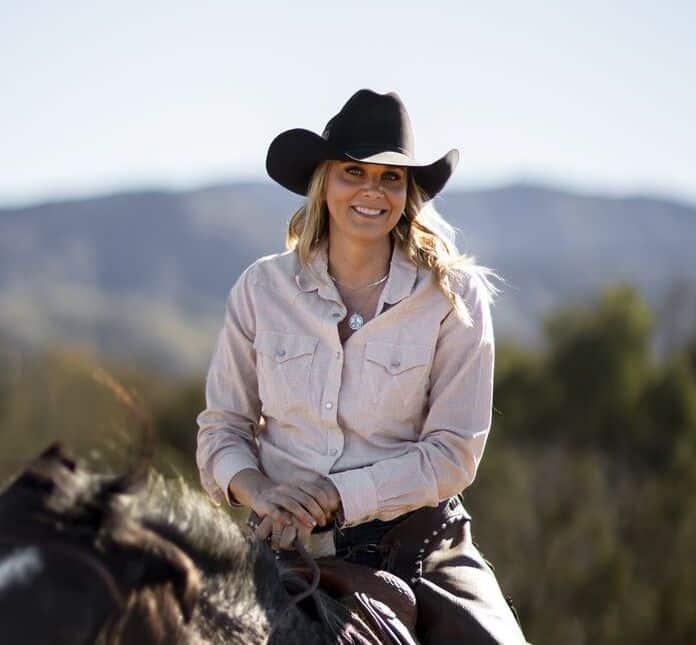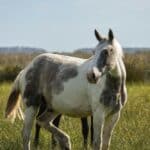Understanding how much weight a horse can safely carry is crucial for their health and well-being. The University of Minnesota Extension directs that an average adult light riding horse can comfortably bear about 20% of its ideal body weight, signifying a blend of the rider’s weight and any additional equipment. This guideline is echoed by the U.S. Cavalry, emphasizing that horses should not be burdened with more than 20% of their own body weight to avoid overloading and potential injuries.
The task of calculating a horse’s carrying capacity involves a careful consideration of factors including the horse’s body weight and the total weight of the rider and gear. With the National Riding Stables setting a rider weight limit at 210 pounds, it underscores the importance of adhering to safest practices to protect these equines from harm. As horses serve a significant role in recreation and competitive riding across the United States, understanding how much weight a horse can hold, how much weight horses can carry, and what’s the max weight a horse can carry becomes pivotal in fostering their health and performance.
Understanding the 20% Rule
The 20% rule serves as a fundamental guideline in determining how much weight a horse can safely carry without compromising its health and performance. Originating from various studies, this rule suggests that horses should not be burdened with more than 20% of their ideal body weight. This includes the combined weight of the rider and any gear, which is crucial for maintaining the horse’s well-being and functionality.
Research conducted by Ohio University in 2008 reaffirmed this guideline, showing that horses in good condition could comfortably carry about 20% of their ideal body weight. Further studies underscored the importance of considering individual factors such as the horse’s conformation, strength, and overall health beyond just a universal percentage. For instance, Arabian endurance horses demonstrated that those with smaller cannon bones were more prone to lameness when carrying between 20 to 30% of their body weight, whereas Icelandic horses, known for their compact builds and thicker cannon bones, could comfortably carry adult riders despite their smaller size.
It’s imperative to understand that the 20% rule is not just a number but a starting point for assessing a horse’s carrying capacity. Factors like loin width and cannon bone circumference are also critical in determining how much weight a horse can carry. These anatomical considerations help in making informed decisions to ensure that the weight carried does not adversely affect the horse’s gait, behavior, or health in the long term.
Factors Influencing Carrying Capacity
Several factors play a crucial role in determining the weight a horse can comfortably and safely carry. These factors are broadly categorized into internal and external elements, each influencing the horse’s overall carrying capacity.
Internal Factors
- Conformation and Body Condition: The physical structure of a horse significantly impacts its ability to bear weight. Horses with wider loins and greater cannon bone circumferences experience less muscle soreness and are generally more capable of carrying heavier loads. Additionally, horses with shorter backs and muscular hindquarters are better equipped to carry more weight than those with longer backs.
- Fitness and Health: A horse’s overall fitness and health condition are vital. Regular exercise and conditioning enhance a horse’s strength, making it easier to carry weight. Regular veterinary checks and a balanced diet also contribute to a horse’s fitness and thus its weight-carrying capacity.
- Age and Muscling: Younger horses or those not fully muscled may have a lower weight-carrying capacity. In contrast, mature horses that are well-conditioned can carry more weight effectively. Dr. Deb Bennet points out that ideal weight-bearing qualities in horses include factors like excellent loin coupling and a pelvis that constitutes at least 30% of the body length.
External Factors
- Rider and Equipment: The weight and balance of the rider, along with the fit and weight of the saddle and other equipment, are critical. A well-fitted saddle helps distribute the rider’s weight evenly, minimizing the strain on any single part of the horse’s body. The rider’s fitness and riding skills also play a significant role; a balanced, skilled rider can be easier for a horse to carry compared to an unfit or uncoordinated rider.
- Type and Duration of Activity: The nature of the activity significantly affects how much weight a horse can carry. High-intensity activities like galloping or jumping require lighter weights to maintain the horse’s health and prevent injuries. Conversely, activities such as quiet hacking or light trail riding are less taxing on the horse, allowing for slightly heavier weights.
- Environment: The terrain and weather conditions also influence a horse’s carrying capacity. Rough terrain, higher altitudes, and extreme weather conditions can all decrease the amount of weight a horse can safely carry. Regular foot care and appropriate hoof maintenance are essential, especially when navigating challenging environments.
Understanding these factors and how they interact is essential for anyone involved in horse riding and care. By considering both the internal and external influences on a horse’s weight-carrying capacity, riders and caretakers can make informed decisions that ensure the safety and well-being of these magnificent animals.
Calculating Your Horse’s Carrying Capacity
To accurately determine a horse’s carrying capacity, several methodologies and tools can be employed. One common approach involves using a formula where the horse’s weight, the rider’s weight, and the weight of the tack are considered. To apply this, you first add the combined weights and then factor in the physical dimensions of the horse, such as the cannon bone’s circumference. Specifically, take the total weight, divide it by the cannon bone’s circumference just below the knee, and then divide that number by 2. The ideal result should range between 75 and 85, indicating a suitable weight for the horse to carry without strain.
For those seeking more precise calculations, technology offers solutions like the Horse Rider Weight Calculator (HRWC), which provides options for exact weight, accurate estimate, or rough estimate calculations. This tool considers the horse’s weight and defaults to adding a saddle weight of 6 kg, providing a user-friendly interface for determining appropriate load capacities. It’s important to remember, however, that such calculators are for estimation purposes only and should not replace professional advice.
In addition to technological tools, traditional methods such as the Body Condition Score (BCS) continue to be relevant. This method assesses the horse’s fitness and overall health, which are critical to determining its weight-bearing abilities. Proper saddle fitting is also essential, as it ensures the weight is evenly distributed across the horse’s back, preventing localized pressure points and potential injuries. By combining these approaches, horse owners and riders can make informed decisions that prioritize the animal’s health and well-being.
The Impact of Overloading
Overloading horses, whether through excessive rider and tack weight or dietary mismanagement, has serious repercussions on their health and performance. When horses carry weights exceeding 30% of their body mass, they risk developing metabolic and orthopedic issues, which can significantly impair their movement and lead to joint problems. Moreover, the continuous burden of maximum load without adequate recovery periods can prevent horses from making positive adaptations, ultimately affecting their well-being and longevity.
The dietary aspect of overloading, particularly with grains, introduces additional risks. Excessive grain consumption can trigger a cascade of health problems, including colic, laminitis, and systemic issues like endotoxemia and metabolic acidosis. These conditions stem from the overload of carbohydrates in the horse’s diet, which disrupts the normal microbial flora in the gut, leading to rapid fermentation, increased lactic acid production, and potential ulceration of the intestinal lining. Such dietary mismanagement necessitates immediate medical intervention, ranging from dietary adjustments to more severe treatments like intravenous therapies and stomach lavaging.
Furthermore, the physical and dietary overloading of horses not only affects their immediate health but can also lead to long-term conditions such as arthritis, hoof problems, and even systemic diseases like Cushing’s disease in cases of iron overload. Preventative measures, thorough health assessments, and appropriate weight management are crucial to maintaining a horse’s health and ensuring their capability to perform without risk of injury or disease.
Tips for Proper Weight Distribution
Maintaining Rider Balance and Saddle Fit
To ensure proper weight distribution on a horse, maintaining a balanced, centered position in the saddle is paramount. Riders should keep their heels down, toes up, and shoulders back to stabilize their position, which helps in evenly distributing the weight across the horse’s back. Engaging core muscles is also crucial as it assists in maintaining balance and minimizing excessive movement, which can unbalance the horse. Additionally, ensuring that the saddle fits the horse properly is essential. A well-fitted saddle should have even contact along the horse’s back, preventing pressure points that could lead to discomfort or injury. Using accessories like a breastplate or crupper can also help stabilize the saddle, preventing it from slipping, which is critical for maintaining an even distribution of weight.
Equipment and Packing Techniques
Proper equipment fit and packing techniques are vital for optimal weight distribution. The equipment, particularly the saddle, should be tailored to fit the horse’s back to best distribute the rider’s weight without causing muscle soreness. Regular checks and adjustments may be necessary to ensure the fit remains perfect as the horse’s body condition changes. Additionally, hooves should be trimmed regularly to ensure a balanced, flat surface for weight bearing, which directly affects how the weight is distributed through the horse’s body. For packing purposes, especially with live weight (riders) and dead weight (pack loads), it is crucial to use proper packing techniques to ensure equal size, weight, and distribution on both sides of the animal. This consideration is essential as live weight shifts, unlike dead weight, so careful packing is critical to keep the load stable and comfortable for the horse to carry.
Enhancing Rider Awareness and Fitness
Improving rider awareness and fitness plays a significant role in proper weight distribution. Riders should regularly engage in exercises to release muscle tension and gain new awareness of their body symmetry, which directly impacts how weight is distributed on the horse. Aiming for two even seat bones allows for better communication and balance, which enhances the horse’s comfort and performance. It is also crucial for riders to check their position frequently and maintain awareness of their symmetry to ensure long-term improvement in weight distribution. Additionally, assuming that performance issues may stem from the horse rather than the rider’s position should be a last resort; often, adjusting the rider’s balance and equipment can resolve many issues.
Conclusion
Throughout this exploration of factors determining how much weight a horse can safely carry, it becomes evident that a blend of anatomical, physical, and external factors must be carefully considered to ensure the wellbeing and performance of these magnificent animals. The 20% rule, although a crucial starting point, is nuanced by considerations like conformation, fitness, and the specifics of the load and activity. By understanding and respecting these limits, we safeguard the health of horses, ensuring they remain capable and comfortable in their roles, whether in competitive sports, recreational riding, or work.
Recognizing the importance of proper weight management, equipment fit, and rider balance underscores the mutual respect and responsibility in the human-horse relationship. As caretakers, educators, and enthusiasts, our commitment to further research and education in this area is vital for the ongoing health and performance of horses. Let us continue to prioritize their well-being by making informed, considerate decisions that honor their service and companionship, reflecting our dedication to their care and highlighting the significance of our partnership with them.
FAQs
1. What is the maximum weight a horse can carry?
A horse can typically carry a rider that weighs up to 20% of its own body weight. For instance, a horse weighing 1000 pounds can comfortably carry a 200-pound individual. However, the exact weight a horse can carry may vary based on its physical build and muscle strength.
2. Is it possible for a person weighing 300 pounds to ride a horse?
Yes, a person weighing under 300 pounds can ride a horse, provided they can lift their foot 20 inches high, pull themselves up to that height, and step down while supporting their weight. Additionally, they must fit between the horn and the cantle of a 20-inch saddle to ride comfortably.
3. Can a horse support a 500-pound individual?
Generally, horses can carry about 20% of their body weight. To carry a 500-pound individual, a significantly larger horse would be required, as this weight exceeds the typical carrying capacity for most horses.
4. Is it safe for a 260-pound person to ride a horse?
According to Deb Bennett, PhD, an expert in horse biomechanics, the total weight of the rider including tack should not exceed 250 pounds. She advises that no horse, regardless of breed or build, should carry more than this weight for more than a few minutes, as it can be detrimental to the horse’s health.
References
[1] – https://extension.umn.edu/horse-care-and-management/guidelines-weight-carrying-capacity-horses
[2] – https://www.jecballou.com/trainingtips/limit-the-load-how-much-can-horses-carry
[3] – https://nationalridingstables.org/weight-policy
[4] – https://equusmagazine.com/horse-care/weight_carry_062608
[5] – https://www.justhorseriders.co.uk/blogs/news/unraveling-equestrian-myths-the-20-percent-weight-rule-for-horses
[6] – https://www.therideout.co.uk/horse-conformation/debunking-the-20-rider-weight-rule-for-horse-riding/
[7] – https://phoenixrisingsaddles.com/pages/determining-a-horses-weight-bearing-capacity
[8] – https://www.countryandstable.com/blog/how-much-weight-can-your-horse-carry-horse-rider-weight-calculator/
[9] – https://www.outfitterssupply.com/how-much-weight.asp
[10] – https://cdn.yello.link/abrs/files/2022/03/Horses-and-Rider-Weight-Fact-Sheet-1.pdf
[11] – https://old.pathintl.org/63-resources/resources-landing-page/1361-equine-tips-how-much-weight-can-my-horse-carry
[12] – https://good-horse.com/tools/calculator-much-weight-can-horse-carry/
[13] – https://nutrenaworld.com/ask-the-expert-how-many-horses-can-your-pasture-support/
[14] – https://emsvet.com/newsletters/grain-overload-beware/
[15] – https://www.foxvalleyequine.com/wp-content/uploads/2020/09/Carbohydrate-Overload-1.pdf
[16] – https://horsesidevetguide.com/drv/Observation/23/grain-overload-horse-got-into-feed-room/
[17] – https://www.forageplustalk.co.uk/iron-overload-in-horses-by-dr-kellon/
[18] – https://www.horseforum.com/threads/weight-distribution-across-the-stirrup-bar.766697/
[19] – https://dressagetoday.com/instruction/correcting-rider-asymmetry/
[20] – https://www.ncbi.nlm.nih.gov/pmc/articles/PMC8151148/
[21] – http://extension.msstate.edu/publications/managing-small-pasture-for-horses
[22] – https://extension.okstate.edu/fact-sheets/managing-grazing-of-horses.html
[23] – https://www.extension.purdue.edu/extmedia/ID/ID-167.html











